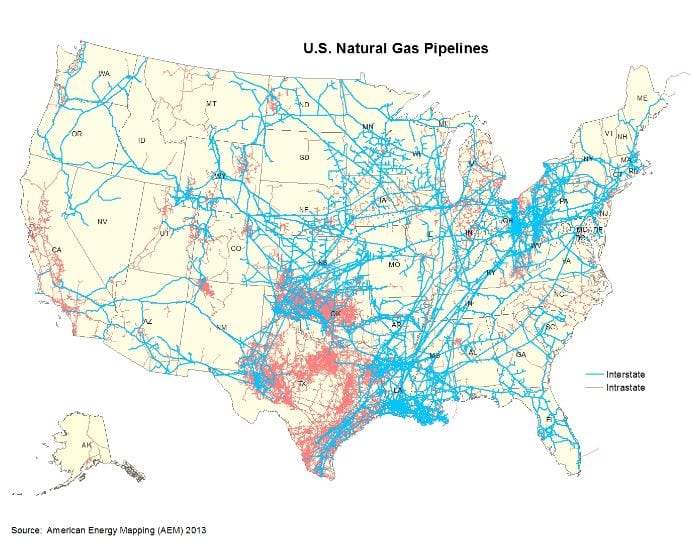Natural gas pipelines come with a unique set of benefits that helps grow our country and save the environment. Natural gas supplies nearly one-fourth of all of the energy used in the United States. There are more than 68 million residential customers and more than 5 million commercial enterprises using natural gas in the United States. Natural gas is found across the country, and 33 states are now producing or have produced this fuel. The pipelines keep our homes and businesses running safely and efficiently. Let’s explore some of the advantages.
Once a pipeline is in place, the cost of transportation is greatly reduced compared to trains, trucks, and ships. Pipelines can also cross barriers faster than trucks or trains. They can easily transverse rivers and steep slopes and reach rural areas. Pipelines ensure safe natural gas for all communities, from big cities to country farms.
Natural gas will not be held up because of traffic or shipping concerns; once a pipeline is up and running, it will continue to flow for decades. Considering many of the pipelines in use now were built from the 1920-1960s, they are still going strong.
Increased use of natural gas is helping to combat climate change by lowering carbon dioxide emissions. While U.S. gas production is up 37 percent since 1990, greenhouse gas emissions are down 17 percent. According to the Environmental Protection Agency, natural gas is also better than coal because it does not produce ash and other particulates. The pipelines that bring natural gas throughout the U.S. ensure the resource reaches homes and businesses without truck, train, or ship emissions.
Once a pipeline is in place, the land it occupies can still be farmed or returned to its natural splendor. In fact, pipeline companies often use Submar’s articulated concrete mats to help restore the natural landscape. The Submar mats adjust to the natural slope and encourage vegetation to take hold.


